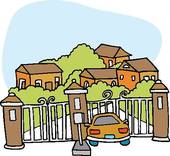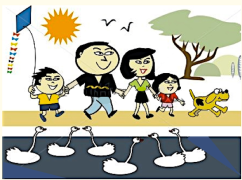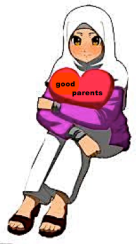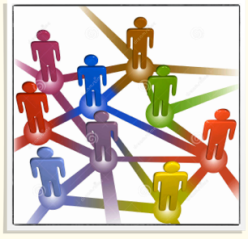HOW DO I FIT IN,
& still be me?
PREVIOUS: ACoA Poem
See Inner Child MOVIE :
“If you believe”
1. NORMAL HIERARCHY
• Most organizations still function is a hierarchical system, with clearly identified Roles** for their members, as in governments, corporations, sports, law enforcement, social groups, most religious congregations, schools (esp. if students are under-age) ….. and of course, families.
Yes, it is possible to have consensus or democratic rule in some of these, BUT ONLY when made up entirely of rational adults.
** Roles are ‘social expectations & norms held regarding an individual’s position & behavior within a group’ (Simon, Stierlin & Wynne, 1985)
• To function properly, family systems need to organize themselves to carry out daily challenges & responsibilities, as well as adjust to the developmental needs of its members. But to understand the dynamics of any family unit, it takes more than just listing who the individuals are – we need to know how they come together & interact.
The family system exists in paradox: it has to be stable to provide continuity over time, while being able to adapt to fluctuations. It’s a balancing act : too much change – the system breaks down, too much stability – it atrophies & dies
• All families organize themselves into hierarchies & then into subsystems, which may be grouped by generation, age, gender…., to accomplish their tasks & goals. These smaller groupings can be grandparents, aunts & uncles, parents & children, males & females, the older & younger, the skilled & unskilled, the sick & well…… Naturally, individuals & the subsystems are influenced by & dependent on one another, so what happens to one affects the other
• Hierarchies need Boundaries, TO:
— have a line between subsystems
— control the flow of info into, out from & about the family
— influence the flow of people allowed in & out of the system
• According to Family Systems Theory, all families strive for a sense of homeostasis (balance), in an effort to find equilibrium between life’s challenges & the family’s resources to handle them.
New patterns of interacting with each other will have to show up to keep inevitable changes from getting out of hand.
When this doesn’t work, additional family rules or dynamics have to be added or adjusted to restore balance. This happens in both healthy & unhealthy systems, but the solutions will be very different!
• This balancing act has EITHER:
🕴morphostasis – a system’s ability to hold its shape & structural stability – by trying to conform ‘perfectly’ to a situation, keep strictly to its rituals, allowing only those changes that do not threaten the existence of the family…. in the face of all types of stressors
OR
🕴morphogenesis (creation of life) – a systems’ ability to change its form, grow systemically over time & adapt to the changing needs of the family
• To keep the group going & make things harmonious, each family member needs to have an age-appropriate role, which should be stable but not rigid. Ideally, members have specific jobs, governed by rules & strategies
✶ PARENTS are expect ed to fill a wide range of needs for themselves such as financial stability, relaxation & hobbies, mental stimulation, community participation, having a satisfying sexual relationship….
ed to fill a wide range of needs for themselves such as financial stability, relaxation & hobbies, mental stimulation, community participation, having a satisfying sexual relationship….
.
ALSO provide children with :
the Basics – Daily maintenance, provision of food, clothing, shelter & health care
Emotional needs
• Nurturing, warmth, a sense of home, a genuine feeling of safety & security
• Inclusion, fulfilling the need for love & belonging
• Esteem, giving self-worth, personal value, support, encouragement
Mental & Social needs
• Age-appropriate discipline, setting boundaries, correcting & guiding
• Information, how things are done, help with homework, how to be social, handling finances
• Privacy, respect for each member’s autonomy & separateness
• Recreation, opportunities to have fun together
• Understanding, having the right to make mistakes & learn from them
Spiritual needs
• encouraged to have meaning & purpose in life, suited to the child
• gain a sense of the larger community & their place in it
 • allowing development of a relationship with a Higher Power
• allowing development of a relationship with a Higher Power
✶ CHILDREN are expected to learn from, cooperate with & respect their parents (must be age-appropriate) BY:
— attending school keeping up with homework
— expressing their intellectual & artistic gifts
— helping with tasks around the house
— trying out new & interesting skills, games & social settings
• People play many social roles – such as parent, sibling, worker, student, lover…. each with it’s own set of requirements & functions.
This is normal & healthy as long as they have a positive core identity to underpin their role, & are free to express many different aspects of themselves.
NEXT: Toxic ROLES – #1

